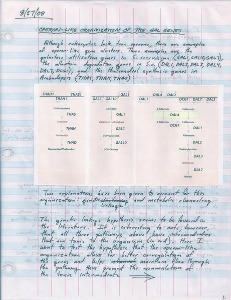In April 1990, Eric Davis was just two years old and diagnosed with aplastic anemia, a disease that would eventually require a bone marrow transplant for him to stay alive. When none of his family were matches, the family began raising the $100,000 required to find an unrelated donor. Finally in 2004, when his disease was no longer able to be controlled by the drugs the doctors prescribed, a donor was found in Germany. The transplant essentially cured Eric and he was able to thrive, later earning a degree in biology. He also found his way to New York City in 2011, working in a research lab at Memorial Sloan Kettering (MSK). When a position opened up to manage the Unrelated Donor Program at MSK, he jumped at the chance to be able to help patients like himself.
Category Archives: In the News
Combined Therapy for Glioblastoma, New Biomarker Blood Test and More…
Surfing the web, I uncovered these news items worth sharing
- Cancer researchers at Lund University in Sweden have teamed up with Robert Egnell at the Swedish Defence University to explore whether or not military strategy could be used as inspiration for cancer treatment.
- Results from a recent clinical trial shows that treating older patients who have malignant brain cancer with the chemotherapy drug temozolomide plus a short course of radiation therapy extended the life of patients with glioblastoma. The findings were published in the NEJM.
- A prospective clinical trial demonstrated that a that a blood test looking at specific biomarkers was able to detect recurrences of lung cancer an average of six months before conventional imaging methods found evidence of recurrence. The findings were recently presented at the 2017 Multidisciplinary Thoracic Cancers Symposium . From the list of abstracts, see #3.
Could Many Published Medical Findings Be False?
A new article published in this month’s Annual Reviews delves into the issue that many published medical findings may actually be false. This concern has been written about before, notably in PLoS in 2005, but the authors here attempt to describe the issues with data analysis practices and “point to tools and behaviors that can be implemented to reduce the problems with published scientific results.”

The authors, Jeffrey T. Leek and Leah R. Jager of Johns Hopkins, begin by defining false discoveries in medical research. They describe how scientific publishing was created before the age of modern computing, statistics, data analysis software and the Internet. The overabundance of data, compounded by the pressure to produce positive results by groups like funding agencies, has created a cloud of suspicion over published research. They believe that it “is possible to confuse correlation with causation, a predictive model may overfit the training data, a study may be underpowered, and results may be overinterpreted or misinterpreted by the scientific press.”
Continue reading